|
|
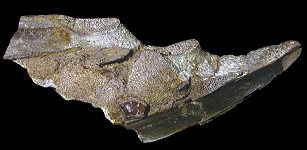 |
|
Elasmobranchs (Sharks & Rays) |
CHIMAERAS (Ratfish) |
BRITISH CHALK CHONDRICHTHYES
(Cartilaginous Fish)
| Introduction |
Though the cartilaginous fish have been abundant since the Palaeozoic, only their teeth (and less commonly fin spines) possess good preservation potential. The cartilaginous fish of the Chalk are therefore best characterised by their teeth, which, for the elasmobranchs (sharks), are very diverse (even within individuals) and relatively abundant.
Small to medium sized teeth are encountered with reasonable frequency, and very small teeth (less tan 2 mm) are often highly abundant in the Chalk's microscopic fraction (only practically investigated by bulk sampling). Large shark teeth, though relatively scarce in the field, are conspicuous and popular fossils, and tend to be disproportionately well represented in collections (especially true for Ptychodus). The roots are commonly missing from fossil teeth, which can render some specimens (mainly Lamniformes) unidentifiable.
Teeth and other phosphatic clasts are locally very abundant in condensed and reworked stratigraphic successions in the Chalk (e.g. Totternhoe Stone). Samples must typically be broken down by acetic or formic acid, but may yield several tens of teeth per kilo. These levels usually contain both large and microscopic teeth in the Grey Chalk, and are easily identified in the field. However, phosphate-rich levels in the White Chalk may yield only microscopic teeth and are recognised with relative difficulty. Regular Chalk samples will yield only a couple of minute teeth per kilo.
Isolated elements of the cartilaginous chondrichthyan skeleton (mainly vertebrae) are occasionally preserved in the Chalk, but these cannot be identified with any precision. The bony fin spines are found rarely, and these can be identified with low confidence to the family level. Small dermal denticles are also present, although rarely seen in collections (presumably due to their small size). Finally, the characteristic heteropolar coprolites / enterospirae (?), which are often abundant in the Grey Chalk, are likely assignable to the chondrichthyes.
Ratfish are very scarce in the British Chalk and typically occur as isolated dental plates or fin spines. Associated dental plates are encountered extremely rarely.
A small number of articulated and semi-complete chondrichthyan skeletons are housed in the major museum collections (multiple examples of Synechodus and Heterodontus, some specimens of Squatina and Scyliorhinus, single specimens of Hemiscyllium and Elasmodectes, and jaw sets of Ptychodus). Articulated associations of teeth lacking the cartilaginous jaws are also present in museum collections (mainly Ptychodus, but also Synechodus)
These are the Key observations from recent studies of the elasmobranchs (see Underwood, 2006):
Most of the elasmobranchs present in the Late Cretaceous are neoselachians ('modern' sharks: the majority of the Chalk fauna), and most of the orders present in the Chalk are still alive today - as such they can be referred to by their common names (e.g. Nurse Sharks; Dogfish).
Most of the taxonomic diversity is contained in the microscopic (less than 2 mm) fraction of fossil teeth - unusually among major fossil groups, this has only very recently begun to be properly described.
Most of the taxa recognised prior to recent studies are based on large teeth - these mainly belong to the order Lamniformes (Mackerel Sharks).
The phylogeny (evolutionary history) of the neoselachians is largely resolved by recent genetic studies - there is good consensus amongst published models which correspond well to the fossil record.
The Batomorphii (rays) share an ancestry with the earliest Neoselachians (according to genetic models) - as opposed to originating at a relatively late stage in neoselachian evolution from the Squalea (the traditional view, based on studies of morphology. The position of the Batomorphii is the key difference between the genetic and morphology based phylogenies).
The Chalk sharks are all euselachians ('true' sharks), comprising almost entirely of neoselachians ('modern' sharks) with a very small proportion of more 'primitive' (less derived) hybodontids, more familiar from the Jurassic and Early Cretaceous. The neoselachians are unified by the shared common ancestor to all living sharks. Thus, extinct taxa such as the anacoracids (Crow Sharks) can be included in the Neoselachia because they share a common ancestor with living sharks. In practise it is difficult for the amateur collector to apply any morphological concept for distinguishing the neoselachians. Technically, they possess mineralised vertebral centra, and the teeth possess multiple layers of enamel (sharks three layers; rays two layers).
The three Late Cretaceous elasmobranch orders not yet reported from the British Chalk (Pristiophoriformes (Saw Sharks); Echinorhiniformes (Bramble Sharks); Dalatiiformes (Sleeper Sharks)) are deep-water forms with a limited Late Cretaceous fossil record. Focussed collecting in the future will likely demonstrate the presence of some of these taxa in the British Chalk - the Dalatiiformes in particular are already recognised in the higher Chalk of Northern Europe.
Classification of the well known Ptychodus sharks remains a problem as they possess characters which suggest a number of non-compatible affinities. Recent workers have tended to treat the Ptychodontids as relatively 'primitive' euselachians, close to the Hybodontids, whilst some modern studies conclude that they are neoselachians.
The scarce and low-diversity chimaera taxa recorded from the Chalk comprise families which are still present today (chimaerids; rhinochimaerids; callorhynchids), though the Late Cretaceous forms were generally larger than modern taxa.
It should be noted that identification of isolated fossil shark teeth is often problematic, especially amongst the Lamniformes, and identifications given on these pages are often based largely on consensus of technical advice, given with varying confidence.
[SEM images below of meso-/microscopic material are used courtesy of David Ward and Charlie Underwood. Images of comparable Albian Gault Clay specimens are used where images of Chalk material are not currently available to this project. Special thanks to Charlie for extensive technical input on the taxonomy and fossil occurrence of the Chondrichthyes. Further thanks to Pieter De Schutter, Guy Van den Eeckhaut, John Bastiaansen, Jean-Pierre Biddle and Mikael Siverson for much assistance with identification of specimens. Additional technical input from David Ward, Kenshu Shimada and Michael Everhart. A number of individuals have contributed images from their collections, as credited. Final extra special thanks to the staff of the various museums who permitted access to collections, including much of the UK's type material, and very kindly granted permission for use of images, as credited.]
|
|
|||||
|
Euselachii [True Sharks (Including Rays)] |
|||||
|
Hybodontidea
|
|||||
 |
|||||
| Polyacrodontids | |||||
| Neoselachii [Modern Sharks & Rays] | |||||
| Squalea [Squalomorpii] | |||||
|
NEOSELACHII INCERTAE SEDIS [Ptychodonts] - Extinct |
Synechodontiformes
[Synechodonts] - Extinct |
||||
 |
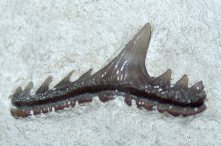 |
||||
| Ptychodontids | Palaeospinacids | ||||
|
Hexanchiformes [Cow / Six-gill Sharks] |
Squatiniformes
[Angel Sharks] |
Squaliformes [Dogfish] |
|||
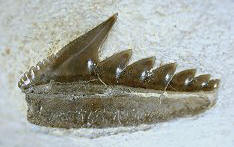 |
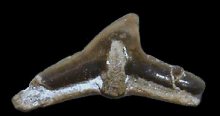 |
![Image from www.gaultammonite.co.uk [Fossils of the Gault Clay], by kind permission of Fred Clouter](images/5ProtosqualusLogo.jpg) |
|||
| Hexanchids | Squatinids | Squalids | |||
|
PRISTIOPHORiformes [Saw Sharks] |
ECHINORHINiformes
[Bramble Sharks]) |
DALATIiformes
[Sleeper / Kite Fin Sharks Fins] |
|||
|
Not yet recorded from the British Chalk |
Not yet recorded from the British Chalk |
Not yet recorded from the British Chalk |
|||
| Pristiophorids | Echinorhinids | Dalatiids | |||
| Galea (Galeomorphii) | |||||
|
Heterodontiformes
[Bullhead Sharks] |
Orectolobiformes
[Carpet Sharks] |
||||
![Image from www.gaultammonite.co.uk [Fossils of the Gault Clay], by kind permission of Fred Clouter](images/5-HeteroLogo-anterior.jpg) ![Image from www.gaultammonite.co.uk [Fossils of the Gault Clay], by kind permission of Fred Clouter](images/5-HeteroLogo-posterior3.jpg) |
 |
||||
| Heterodontids |
Parascyllids [Collared Carpet Sharks], Ginglymostomatids [Nurse Sharks], Hemiscyllids [Bamboo Sharks] |
||||
|
Lamniformes
[Mackerel Sharks] |
|||||
 |
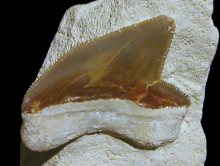 |
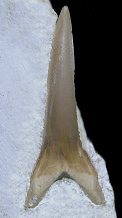 |
|||
|
Eoptolamnids - Extinct |
Anacoracids [Crow Sharks] - Extinct |
Mitsukurinids [Goblin Sharks] |
|||
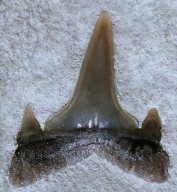 |
 |
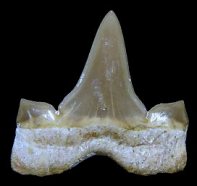 |
|||
|
Odontaspidids [Sand Sharks] |
Incertae Sedis Archaeolamna - Extinct |
Otodontids - Extinct |
|||
 |
 |
 |
|||
|
Cardabiodontids - Extinct |
Cretoxyrhinids [Ginsu Sharks] - Extinct |
Incertae Sedis Cretodus - Extinct |
|||
| Carcharhiniformes ['Ground' Sharks] | |||||
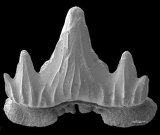 |
|||||
|
Scyliorhinids [Cat Sharks / Dogfish], Triakids
[Hound Sharks], Carcharhinids [Requiem Sharks], Leptochariids [Barbeled Hound Sharks], ?Proscylliids [Finback Cat Sharks] |
|||||
| Batomorphii [Rays, Skates] | |||||
| Rajiformes [True Rays, Skates] | |||||
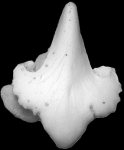 |
|||||
|
Rhinobatids [Guitarfish], Rhynchobatids [Wedgefish / Guitarfish],
Sclerorhynchoids - Extinct, Rajids [Skates], Dasyatids [Stingrays] - not yet recorded from the British Chalk |
|||||
| ELASMOBRANCH (SHARKS) SKELETAL ELEMENTS | |||||
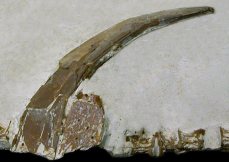 |
 |
 |
|||
| Dorsal Spines | Vertebrae | Placoid Scales (Dermal Denticles) | |||
| Holocephali (Ratfish / Chimaera) | |||||
| CHIMAEROFORMES | |||||
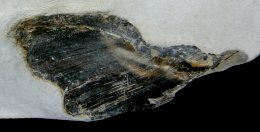 |
 |
||||
| Chimaerids [Short-nose Chimaeras] | Rhinochimaerids [Long-nose Chimaeras] | ||||
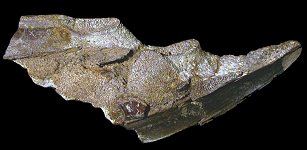 |
 |
||||
| Callorhynchids [Plough-nose Chimaeras] | Dorsal Fin Spines | ||||
| References |
CAPPETTA, H. 1987. Chondrichthyes II, Mesozoic, and Cenozoic Elasmobranchii. In Schultze, H.-P. (Ed.). Handbook of Paleoichthyology, Volume 3B, Gustav Fischer Verlag.
CARVALHO, M. R. de, and Maisey, J. G. 1996. Phylogenetic relationships of the Late Jurassic shark Protospinax Woodward 1919 (Chondrichthyes: Elasmobranchii). 9–49 in ARRATIA, G. and VIOHL, G., eds. Mesozoic fishes: systematics and paleoecology. Proceedings of the international meeting, Friedrich Pfeil, Munich.
DOUADY C. J., DOSAY, M., SHIVJI, M. S., and STANHOPE, M.J. 2003. Molecular phylogenetic evidence refuting the hypothesis of Batoidea (skates and rays) as derived sharks. Molecular Phylogenetics and Evolution 26, 215–221.
EVERHART, M. and CAGGIANO, T. 2004. An associated dentition and calcified vertebral centra of the Late Cretaceous elasmobranch, Ptychodus anonymus Williston 1900. Paludicola 4 (4),125-136. - Download
KRIWET, J., KLUG, S., CANUDO, J. I., CUENCA-BESCOVA, G. 2008. A new Early Cretaceous lamniform shark (Chodrichthyes, Neoselachii). Zoological Journal of the Linnean Society, 154 (2), 278-290.
MAISEY, J. G., NAYLOR, G. J. P. and WARD, D. J. 2004. Mesozoic elasmobranches, neoselachian phylogeny and the rise of modern elasmobranch diversity. Pp. 17–56 in ARRATIA, G. and TINTORI, A., eds. Mesozoic fishes, Vol. 3. Systematics, palaeoenvironments and biodiversity. Friedrich Pfeil, Munich.
NAYLOR, G. J. P., MARTIN, A. P., MATTISON, E.G. and BROWN, W.M. 1997. Interrelationships of lamniform sharks: testing phylogenetic hypotheses with sequence data. 199-218 in, KOCHER, T.D. and STEPHN, C.A. eds. Molecular Systematics of Fishes. Academic Press, San Diego.
SIVERSON, M. 1999. A new large lamniform shark from the uppermost Gearle Siltstone (Cenomanian, Late Cretaceous) of Western Australia. Transactions of the Royal Society of Edinburgh; Earth Sciences, 90, 49-66.
SHIMADA, K. 2005. Phylogeny of lamniform sharks (Chondrichthyes: Elasmobranchii) and the contribution of dental characters to lamniform systematics Paleontological Research. Palaeontological Society of Japan, 9 (1), 55–72. - Download
SHIRAI, S. 1996. Phylogenetic interrelationships of neoselachians (Chondrichthyes: Euselachii). 9–34 in STAISSEY, J., PARENTI, L. R. and JOHNSON, G. D, eds. Interrelationships of fishes. Academic Press, San Diego.
STAHL, B. J. 1999. Chondrichthyes III. Holocephali. Handbook of Paleoichthyology 4. Verlag Dr. Pfeil, Munich.
STEWART, J. D. 1980. Reevaluation of the phylogenetic position of the Ptychodontidae. Abstracts of Papers, Kansas Academy of Science, Transactions 83 (3),154.
STEWART, J. D. 1988. Paleoecology and the first North American west coast record of the shark genus Ptychodus. Journal of Vertebrate Paleontology, 8, 27A.
UNDERWOOD, C.J. 2006. Diversification of the Neoselachii (Chondrichthyes) during the Jurassic and Cretaceous. Palaeobiology 32 (2), 215-235.
UNDERWOOD, C.J., and WARD, D.J. 2008. Sharks of the order Carcharhiniformes from the British Coniacian, Santonian and Campanian (Upper Cretaceous). Palaeontology 51 (3), 509–536
WELTON, B. J. and FARISH, R. F. 1993. The collectors guide to fossil sharks and rays from the Cretaceous of Texas. Horton Printing Company, Dallas.
WINCHELL, C. J., MARTIN, A. P. and MALLATT, J. 2004. Phylogeny of elasmobranches based on LSU and SSU ribosomal RNA genes. Molecular Phylogenetics and Evolution 311, 214–224.
WOODWARD,
A.S. 1902-1912. The Fossil Fishes of the English Chalk.
Palaeontographical Society [Monograph], London.
(originally published as individual parts but often available in major academic
libraries as a single bound volume)
WRIGHT, C. W., and SMITH, A. B. 2002. Fishes, in: Fossils of the Chalk (2nd Edition), Smith A. B. & Batten D.J. (Ed.s), Palaeontological Field Guide to Fossils, No. 2, Palaeontological Association, London.